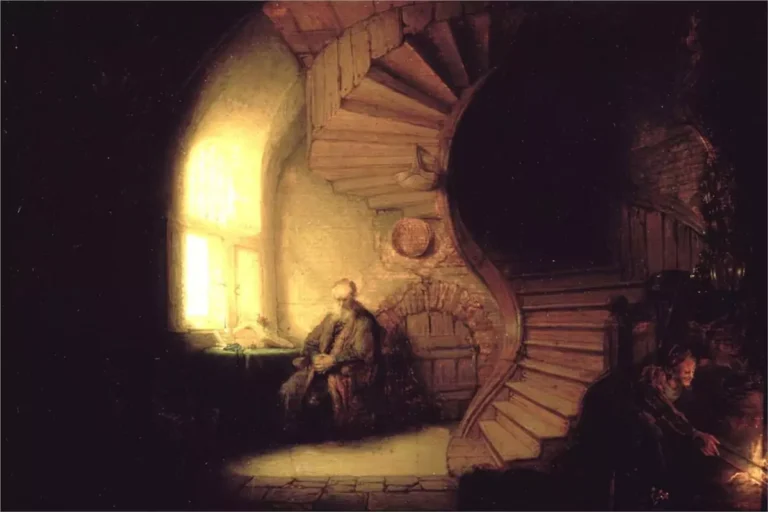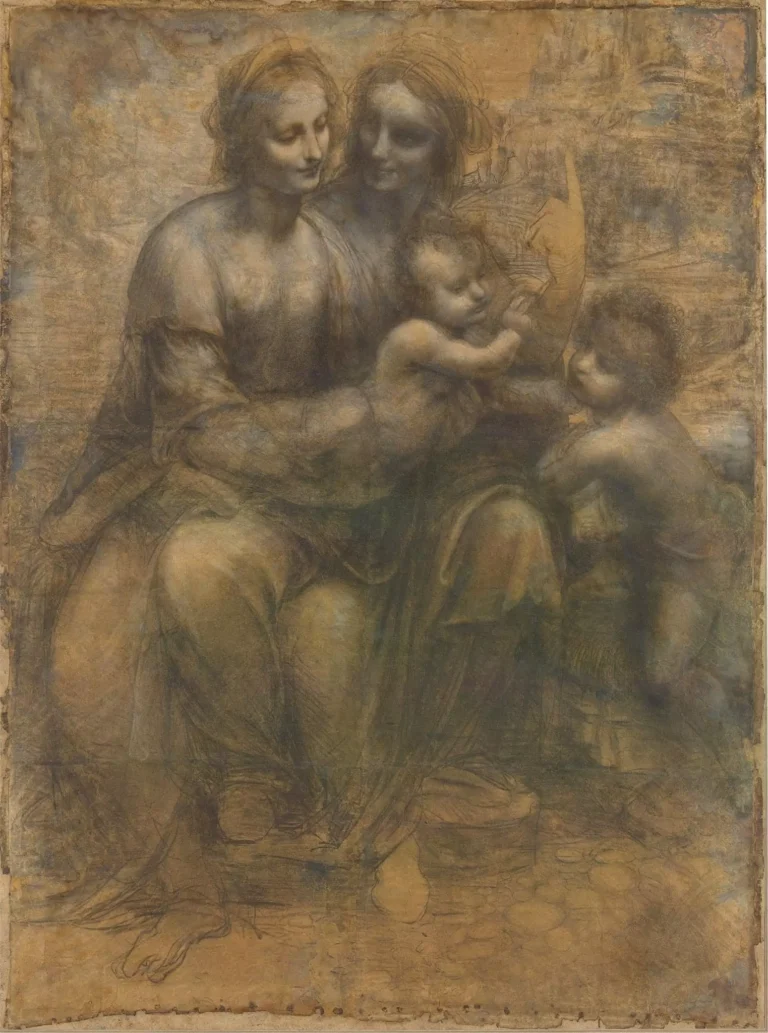Looking for a muse? Check no further. Discover the Best of Art, Culture, History & Beyond!

Imagine standing before a painting that seems to breathe with emotion, where every brushstroke tells a story of profound human experience. That’s the magic of Rembrandt‘s “The Return of the Prodigal Son.” This masterpiece doesn’t just depict a biblical tale; it immerses you in a narrative of forgiveness, redemption, and the complexities of human relationships.
As you gaze upon the canvas, you’re drawn into a dimly lit room where the central figures emerge from the shadows. The aged father, cloaked in rich, warm hues, leans tenderly over his kneeling son. The son’s tattered garments and shaved head speak of a journey fraught with hardship and remorse. To the right, the elder brother stands erect, his clasped hands and somber expression hinting at inner turmoil. Other figures linger in the background, their features softened by the play of light and shadow, inviting you to ponder their roles in this intimate reunion.
The Power of Light and Shadow
Rembrandt’s genius lies in his masterful use of chiaroscuro—the contrast of light and dark. Here, light doesn’t just illuminate; it conveys emotion and significance. The father’s face and hands are bathed in a gentle glow, symbolizing compassion and acceptance. This soft illumination extends to the prodigal son, highlighting the path to redemption. In contrast, the elder brother remains partially in shadow, perhaps reflecting his internal conflict and reluctance to embrace his repentant sibling. This deliberate interplay guides your eye, emphasizing the emotional weight of each character’s journey.
Expressions That Speak Volumes
The emotional depth captured in the faces is nothing short of mesmerizing. The father’s closed eyes and serene demeanor exude a sense of relief and unconditional love. You can almost feel the warmth of his embrace, a physical manifestation of forgiveness. The prodigal son’s posture—head bowed, body leaning into his father’s embrace—conveys a mix of shame, sorrow, and profound gratitude. Meanwhile, the elder brother’s furrowed brow and pursed lips suggest a struggle between duty, jealousy, and the desire for recognition. These nuanced expressions invite you to explore the multifaceted nature of human emotions.
Hands That Tell a Story

Take a closer look at the father’s hands resting on his son’s shoulders. Art historians have noted a fascinating detail: the left hand appears broader and more masculine, while the right hand seems slender and delicate. This subtle distinction has sparked interpretations of a harmonious blend of paternal strength and maternal tenderness, encapsulating a complete and nurturing form of love. It’s as if Rembrandt is reminding you that true compassion encompasses both firmness and gentleness.
The Elder Brother’s Dilemma
The presence of the elder brother adds a layer of complexity to the narrative. His upright stance and clasped hands suggest a man torn between righteousness and resentment. While the parable highlights the father’s joy at the return of his lost son, it also delves into the elder brother’s feelings of injustice and neglect. Rembrandt captures this tension, prompting you to reflect on themes of jealousy, fairness, and the human tendency to compare oneself to others. It’s a poignant reminder that forgiveness and understanding are challenges faced by all, not just the prodigal.
Background Figures: Silent Witnesses
In the subdued background, other figures observe the unfolding drama. Their muted presence adds depth to the composition, creating a sense of a larger community impacted by the family’s dynamics. These silent witnesses may represent societal judgment, extended family, or even the servants mentioned in the biblical parable. Their indistinct features allow you to project your interpretations, engaging your imagination and personal experiences.
A Personal Connection
What makes “The Return of the Prodigal Son” timeless is its ability to resonate on a deeply personal level. Whether you’ve experienced the pain of estrangement, the joy of reconciliation, or the struggle of forgiving, this painting speaks to universal aspects of the human condition. Rembrandt, through his lived experiences of loss, hardship, and redemption, infuses the artwork with authenticity. As you stand before it, you’re not just an observer; you’re a participant in a story that transcends time and culture.
Understanding the context of Rembrandt’s life enriches your appreciation of this masterpiece. Created towards the end of his career, during a period marked by personal tragedies and financial difficulties, the painting reflects a culmination of his artistic and emotional journey. The depth of empathy and insight displayed suggests an artist who has grappled with the complexities of life and emerged with a profound understanding of humanity. This personal connection between the artist’s experiences and his work allows you to feel a sense of intimacy and shared understanding.
Centuries after its creation, “The Return of the Prodigal Son” continues to inspire and move audiences worldwide. Its exploration of themes like forgiveness, unconditional love, and personal transformation remains relevant, offering solace and prompting introspection. The painting serves as a visual sermon, encouraging you to embrace compassion, both towards others and yourself. It’s a testament to the enduring power of art to reflect and shape the human experience.
Final Reflections
As you step away from Rembrandt’s masterpiece, you’re left with a lingering sense of awe and contemplation. The painting doesn’t just tell a story; it invites you to examine your own narratives of forgiveness and redemption. It challenges you to consider the roles you’ve played—as the prodigal, the elder sibling, or the compassionate parent—in your own life. In its silent eloquence, “The Return of the Prodigal Son” continues to speak, urging you to embrace empathy, understanding, and the transformative power of unconditional love.

This article is published on ArtAddict Galleria, where we explore the intersections of art, history, and culture. Stay tuned for more insights and discoveries!



